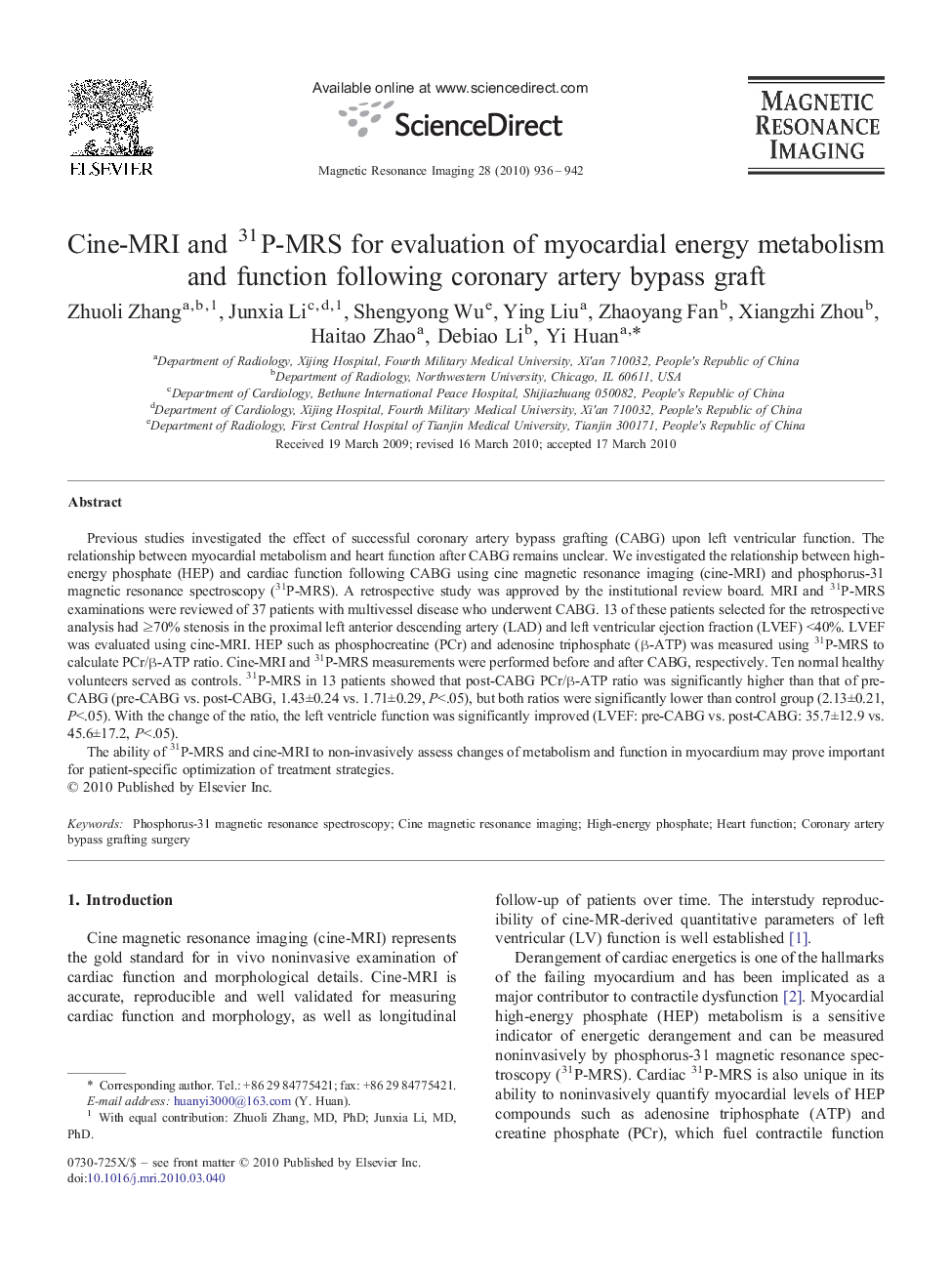| Article ID | Journal | Published Year | Pages | File Type |
|---|---|---|---|---|
| 1807619 | Magnetic Resonance Imaging | 2010 | 7 Pages |
Previous studies investigated the effect of successful coronary artery bypass grafting (CABG) upon left ventricular function. The relationship between myocardial metabolism and heart function after CABG remains unclear. We investigated the relationship between high-energy phosphate (HEP) and cardiac function following CABG using cine magnetic resonance imaging (cine-MRI) and phosphorus-31 magnetic resonance spectroscopy (31P-MRS). A retrospective study was approved by the institutional review board. MRI and 31P-MRS examinations were reviewed of 37 patients with multivessel disease who underwent CABG. 13 of these patients selected for the retrospective analysis had ≥70% stenosis in the proximal left anterior descending artery (LAD) and left ventricular ejection fraction (LVEF) <40%. LVEF was evaluated using cine-MRI. HEP such as phosphocreatine (PCr) and adenosine triphosphate (β-ATP) was measured using 31P-MRS to calculate PCr/β-ATP ratio. Cine-MRI and 31P-MRS measurements were performed before and after CABG, respectively. Ten normal healthy volunteers served as controls. 31P-MRS in 13 patients showed that post-CABG PCr/β-ATP ratio was significantly higher than that of pre-CABG (pre-CABG vs. post-CABG, 1.43±0.24 vs. 1.71±0.29, P<.05), but both ratios were significantly lower than control group (2.13±0.21, P<.05). With the change of the ratio, the left ventricle function was significantly improved (LVEF: pre-CABG vs. post-CABG: 35.7±12.9 vs. 45.6±17.2, P<.05).The ability of 31P-MRS and cine-MRI to non-invasively assess changes of metabolism and function in myocardium may prove important for patient-specific optimization of treatment strategies.
